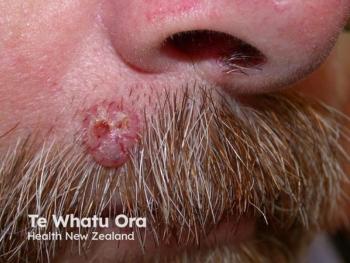
Microneedling Outperforms Injections in Melasma PRP Study
Key Takeaways
- Microneedling demonstrated superior efficacy over microinjection in PRP therapy for melasma, with a 70.21% improvement in MASI scores.
- The study highlighted microneedling's ability to enhance transdermal delivery, improving PRP bioavailability and efficacy.
Microneedling proves more effective than microinjections for PRP therapy in treating melasma, enhancing patient outcomes and satisfaction.
A recent study published in the Journal of Cosmetic Dermatology by Sitaula et al. provides an insightful comparative analysis of 2 delivery techniques for platelet-rich plasma (PRP) therapy in the treatment of melasma: microneedling and microinjection.1 Current treatments for melasma, such as topical agents, chemical peels, and laser therapies, offer variable success rates and are frequently associated with recurrence and adverse effects.2 In this context, PRP therapy, enriched with autologous growth factors, has gained attention for its regenerative and anti-melanogenic potential.
Study Design and Methodology
This prospective, single-center, randomized split-face trial was conducted on 60 patients diagnosed with melasma. The study was ethically approved and included informed consent from participants. Each subject received PRP therapy on both sides of the face—1 side treated with microneedling and the other with microinjections—over 3 sessions spaced 1 month apart. PRP was prepared using double centrifugation to achieve a concentration 4.5 times the baseline platelet level.
Outcome measures included the modified Melasma Area and Severity Index (MASI), Physician Global Assessment (PGA), and Patient Global Assessment (PtGA), with photographs taken for documentation at baseline and follow-ups. Patients were evaluated monthly for adverse effects and improvement in pigmentation.
Results and Efficacy
The study demonstrated a significant overall reduction in MASI scores across both groups. However, microneedling showed superior results compared to microinjection. Specifically, microneedling led to a 70.21% improvement in MASI scores, while microinjection achieved a 36.6% improvement. The percentage of patients experiencing over 75% improvement was notably higher in the microneedling group (46.67%) compared to the microinjection group (5.5%).
Statistical analysis confirmed these differences were highly significant (p < 0.001). The microneedling group also scored higher in both physician- and patient-reported assessments. Side effects in both groups were mild and transient, mostly limited to brief erythema, burning, or soreness.
Discussion and Interpretation
The findings support existing literature suggesting that microneedling enhances transdermal delivery and may facilitate deeper, more uniform penetration of therapeutic agents. By creating microchannels in the skin, microneedling likely improves the bioavailability and efficacy of PRP components, including platelet-derived growth factor and transforming growth factor-beta, which are instrumental in modulating melanocyte activity and promoting dermal remodeling.
This study aligns with prior research by Lima et al. and Gharib et al., which also showed enhanced outcomes when PRP was combined with microneedling. In contrast, while microinjection ensures localized delivery, it may not provide the consistent dermal stimulation or distribution necessary for treating mixed-type or dermal melasma effectively.
Limitations and Future Directions
Despite its valuable contributions, the study has limitations. It was conducted in a single center with a relatively small sample size and employed an open-label design, which may introduce observer bias. Furthermore, long-term follow-up was not included, leaving the durability of treatment effects unassessed.
Future studies should explore larger, multicenter cohorts with longer follow-up periods and controlled designs. It would also be beneficial to investigate optimal PRP concentrations, injection depths, and combination therapies tailored to specific melasma subtypes.
Conclusion
This study provides compelling evidence that PRP therapy, when administered via microneedling, is more effective than microinjection in reducing melasma severity. Given its safety profile, patient satisfaction, and improved efficacy, microneedling should be considered the preferred delivery method for PRP in clinical management of melasma. Nevertheless, further research is necessary to establish standardized protocols and confirm these findings in diverse populations.
References
- Sitaula S, Pokhrel SR, Paudel P, Shrestha A. Efficacy of platelet rich plasma therapy in melasma using microinjections and microneedling techniques. J Cosmet Dermatol. 2025;24(5):e70246. doi:10.1111/jocd.70246
- Arellano I, Cestari T, Ocampo-Candiani J, et al. Preventing melasma recurrence: prescribing a maintenance regimen with an effective triple combination cream based on long-standing clinical severity. J EurAcad Dermatol Venereol. 2012;26(5):611-618. doi:10.1111/j.1468-3083.2011.04135.x
Newsletter
Like what you’re reading? Subscribe to Dermatology Times for weekly updates on therapies, innovations, and real-world practice tips.


















